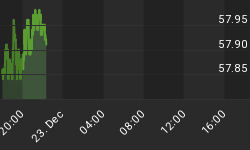"Winter, spring, summer or fall, all you have to do is call, and I'll be there, you've got a friend ..." These are the lyrics of Carol King's song. Yes, as life swings from boom to gloom it is the support of friends that often provide the necessary solace.
It is unlikely that Mr Market will come patting you on the back when your investments go pear-shaped, but he does provide his own unique variety of comradeship. In an environment cluttered with noise, Mr Market offers us the very simple but true adage of "the trend is your friend". This sounds comforting enough, but Mr Market still expects us to fulfill a task: to identify the direction of the trend.
An important point to realize is that there are trends within trends, varying from ultra short (intra-daily) to short (daily) to intermediate (weekly) to long term (monthly). Although day traders play short-term trends from minute to minute, I believe that it is really the identification of the primary (multi-year) trends that holds the key to successful investing.
One way of approaching this is to gauge the fundamental landscape - factors such as unfavorable valuations, stretched profit margins, mounting evidence of an imminent recession and increasing default risk. These paint a fairly bleak picture, but keep in mind the discounting nature of the stock market, having already factored in the gloomy news we are faced with 24/7. In order for the market to fall further the nature of the problems should turn out to be broader and deeper than currently discounted. As mentioned previously, I believe that the fallout of the housing and subprime situation has not been fully discounted.
A more visual way of recognizing the primary trend is by means of analyzing the technical picture, especially using a longer-term perspective.
The following graph indicates how the Dow Jones Industrial Index has been mapping out a series of lower lows and fallen below its 200-day moving average (often seen as an indicator of the primary trend). The shorter term 50-day moving average is trending down and provides an early indicator of what is in store for the longer-term average. The Index has just dropped below its November low on increased volume, serving as further confirmation of a downtrend.

Source: StockCharts.com
The chart below shows the percentage of stocks on the NYSE that are trading above their 200-day moving averages. As of yesterday's close the reading was 28.1%. This is the lowest reading in five years and indicates that more than seven out of every 10 stocks are in primary downtrends. Although the current level appears low, the number has fallen as low as 10% at previous bear market bottoms (such as 2002).

Source: StockCharts.com
Next is the 10-year graph of the NYSE Composite Index (based on monthly data), indicating the price trend together with the MACD oscillator. The failed year-end rally in December witnessed the histograms falling below the zero line (see blue circle) for the first time since the start of the bull market in 2003. (The previous MACD sell signal was given eight-and-a-half years ago in July 1999.)

Source: StockCharts.com
Turning to a monthly graph of the Dow Jones Industrial Index, a similar picture emerges when using the 14-month RSI oscillator. This indicator is overbought at levels above 70 and oversold below 30. The RSI's trend is now falling for the first time since the bull market commenced in 2003.

Source: StockCharts.com
My assessment of the above is that there is more weakness for the stock market ahead. Although the market is oversold on a short-term basis, I would be very reluctant to take long positions in the face what I believe is a market topping out and embarking on a primary downtrend. I therefore concur with Nouriel Roubini, professor of economics at New York University, when he says: "... a lousy stock market in 2007 will look good compared to an awful stock market in 2008."
I wrote a series of bearish articles on the stock market (and bullish on gold) during the latter months of 2007 of which the last one on December 17 was entitled "Is this the end of the stock market party?". Mr Market has provided the answer and it is a rather discomforting one. Yes, "the trend is your friend", but only if you heed Mr Market's warnings and appreciate that the stock market is in a downtrend. Be inordinately cautious with your investment strategy.

Source: Unknown
















